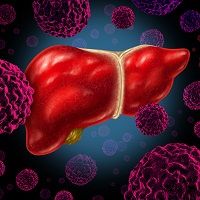New Tool Predicts Postoperative Liver Cancer Recurrence
A predictive calculator known as the nomogram has been shown to accurately determine the risk of disease recurrence in liver cancer patients following transplantation.

A predictive calculator known as the nomogram has been shown to accurately determine the risk of disease recurrence in liver cancer patients following transplantation.
In a study recently published in the Journal of the American College of Surgeons, UCLA transplantation researchers noted the significance of the novel tool to aid physicians in their treatment and surveillance decisions.
Initially developed after the research team’s rigorous analysis of data from UCLA's 30 years of experience with liver transplantation for liver cancer, the study included 865 liver cancer patients who had undergone transplants between 1984 and 2013.
Researchers noted that prior to 1996, there were no existing criteria or guidelines governing accuratescreening processes for selecting liver cancer patients, which ultimately led to a huge wave of transplantations, often with early disease recurrence. As such, 1996 brought forththe "Milan criteria,” which recommended transplantation be limited to patients with a single tumor of 5 centimeters or less or up to 3 tumors with not asingle tumor larger than 3 centimeters.
While the Milan criteria didn’t consider the aggressiveness of the tumor or other biomarkers, the nomogram utilized 3 primary factors to accurately predict recurrence.
According to study author Vatche G. Agopian, MD, Assistant Professor of Surgery in the division of liver transplantation at UCLA,“The 3 different groups of nomogram factors included, the number and size of tumors on MRI and CT scans, 3 pre-transplant blood biomarkers thought to be predictive for cancer recurrence, and pathological characteristics of the explanted liver.”
Agopian said, “This novel nomogram includes 3 important groups of information that proved to be very accurate in predicting recurrence in liver cancer patients, better than any other system out there. Physicians can use our nomogram and have a meaningful discussion with transplant recipients regarding their post-transplant risk of cancer recurrence. It can help them decide how closely to follow their patient - a patient with a low risk of recurrence may not need screening as often - or whether a patient with a high risk of recurrence might need treatment following the transplant."
Keeping the finger on the pulse, research for liver cancer transplantation is moving along the right direction. As the study results found, “In the largest single-institution experience with liver transplant for liver cancer, excellent long-term survival was achieved.”